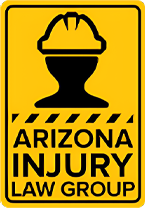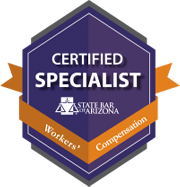|
|
Last Modified on Mar 23, 2023
You’ve probably seen lists of the most dangerous jobs in America. These involve a high risk of serious or fatal injury on the job. Police officers, Alaskan king crab fishermen, and underground coal miners typically rank near the top. In each of these occupations the source of the risk, whether it’s an armed assailant, an icy boat deck or a collapsed mine shaft, is obvious
But what about jobs and professions in which a worker’s overall health is considered? This means taking into account more subtle risks faced in an average work day and include:
- Exposure to chemical or other environmental hazards
- Exposure to serious infectious diseases
- Exposure to non-fatal injury hazards (burns, cuts, etc.)
- Extended periods of sitting (“Sitting is the new smoking”)
When these factors are considered, a surprising number of skilled (and in some cases very well-compensated) occupations make the list. Here are a few.
GENERAL DENTISTS AND DENTAL HYGIENISTS
These two occupations top a number of “ten worst” lists. General dentists and dental hygienists are regularly exposed to infectious diseases and can suffer from carpal tunnel syndrome and other repetitive motion injuries. Their work also often requires sitting for extended periods.
ANESTHESIOLOGISTS AND ASSISTANTS
These highly trained medical personnel administer anesthesia for surgical and non-surgical procedures. They are responsible for monitoring the patient’s vital signs and making appropriate adjustments during the course of the procedure. Their health risks include exposure to infection, radiation, and contaminants.
FLIGHT ATTENDANTS
Although everyone knows this job is often stressful, it’s not one that immediately conjures up images of danger. We’re not talking about the chances of dying in a crash – the odds against that are about one in 11 million (here’s link to a fun article listing things – good and bad – that are more likely to happen to you). However, they do work for hours at a time in the enclosed and recirculated atmosphere of an airliner and are therefore exposed to whatever viruses and bacteria passengers may bring on board. In the sometimes hectic confines of a plane, burns and cuts are also daily risks.
VETERINARY ASSISTANTS
These workers are naturally exposed to diseases on a regular basis, and some can be transmitted from animals to humans. In addition, normally docile pets can become aggressive when fearful or in pain, so bites and scratches are also common.
OUTSIDE SALES REPRESENTATIVES
A study by the American Heart Association found that the stress and sedentary (even if it’s in the car, it’s still sitting) nature of these “road warriors”, along with office and administrative personnel, are at an elevated risk for heart attacks and strokes. The risk increases significantly after age 45.
TRANSPORTATION WORKERS AND MATERIAL HANDLERS
The principal health risk factor here is the high percentage of smokers in these positions (nearly 1 in 4, versus about 1 in 6 in the general population)
FOOD SERVICE
Anyone who has ever waited tables knows it’s a stressful, physically demanding and often thankless and poorly paid job. The Heart Association study above found that wait staff experience high rates of depression. Their frequently irregular schedules and late hours can also lead to having a diet that’s high in sugar, salt, and fats.





